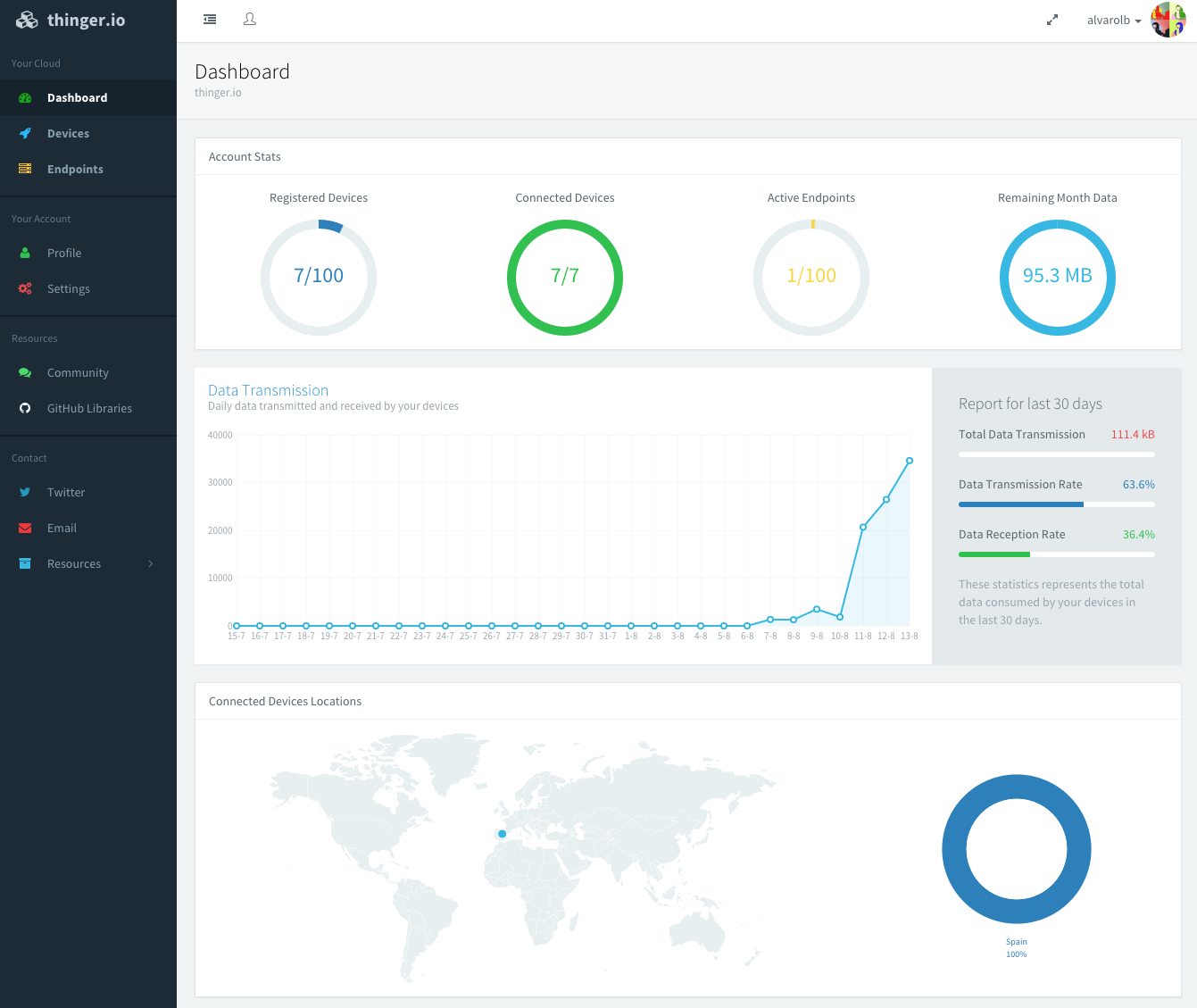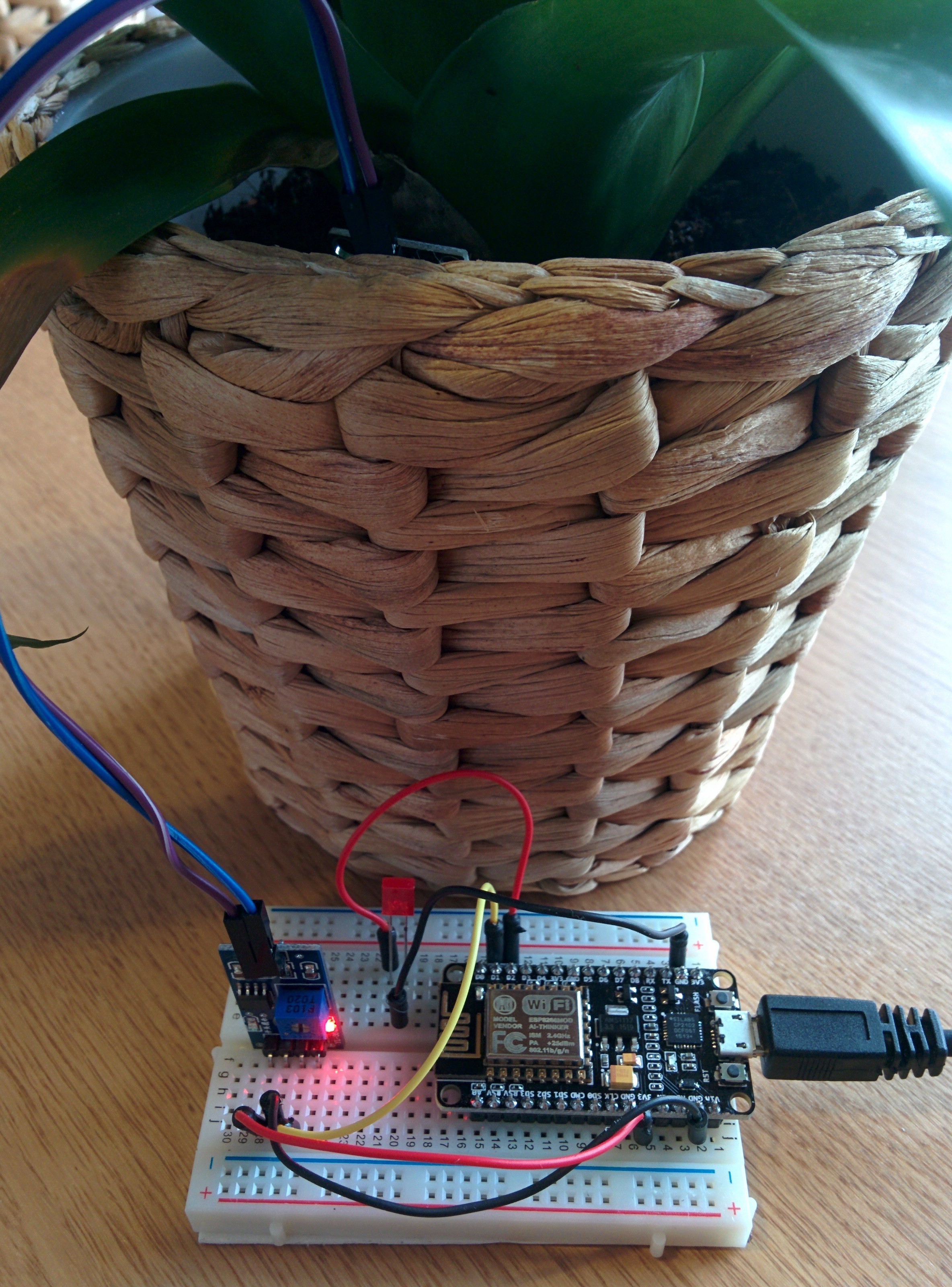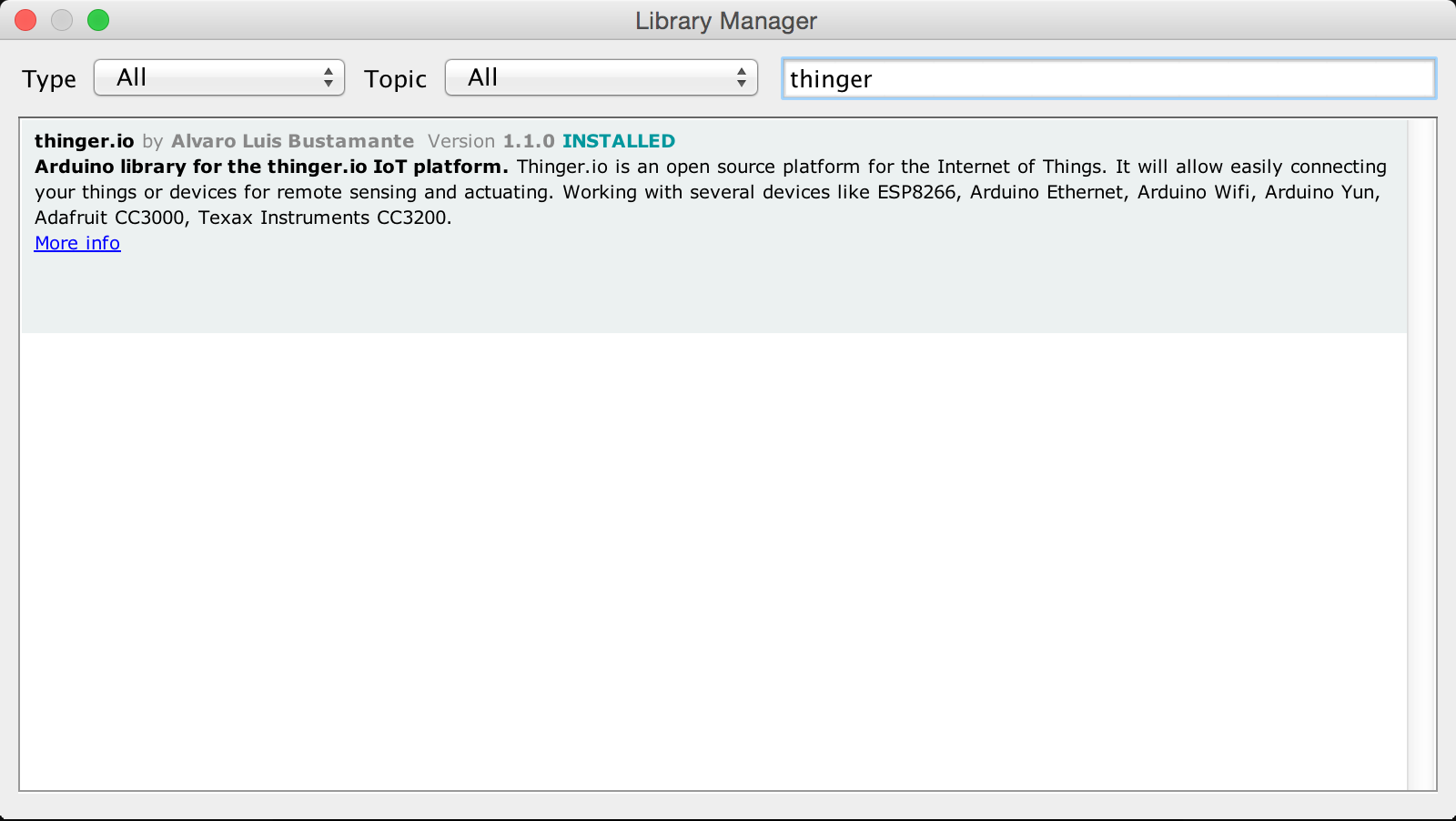-
IFTTT Integration
08/16/2015 at 20:19 • 0 comments![]()
Some months ago the IFTTT platform released the Maker Channel. This new channel allows basically calling HTTP urls for triggering events, and also configuring HTTP endpoints to be called when some event is detected. This channel fits perfectly with the thinger.io platform and will increase the possibilities while building connected devices. Now any device will be able to interact with multiple services and react to external events. That is so cool!
There is a preliminary integration that currently allows triggering events in your Maker channel. Sending a tweet in this way just take one line of code in the device! The next step will allow to your devices to react to external events like weather, citations, incoming emails, and all this stuff from the IFTTT... Just in a few days!
-
Opening Beta Access
08/13/2015 at 16:59 • 3 comments![]()
After too much work building the server, a community forum, and updating the Arduino client libraries, the platform and cloud infrastructure is ready for its opening to some early beta testers. If some of you want to test the platform I can provide you a beta access key. The access is limited to around 100 users to see how it performs and scale. So you can send me a email to admin@thinger.io, a private message here, or writing your email here so I can provide you a beta access key.
Please, take into account that at this moment the easiest way to test the platform is by connecting a device that can be programmed with the Arduino IDE. The Arduino libraries for the thinger.io platform currently supports devices like ESP8266, Arduino Ethernet, Arduino Wifi, Arduino + Adafruit CC3000, Arduino Yun, and Texas Instruments CC32000 (with Energia). So, please request the beta access key if you can test with any of those devices. The platform is also compatible with Linux (tested on Raspberry, Intel Edison, Mac, Ubuntu), but it is more complex to start on those systems.
The platform is in a beta state, but at this moment you can connect your device for sensing (reading sensor values or device state), actuating in real-time (turning on/off leds, relays, servos, configuring parameters, etc), and also call endpoints from the device (send email or do a http request). There are many more features that will be released soon, like allowing opening Websockets or Server sent events to device resources, IFTTT integration, Twilio, an so on... this is just the beginning.
So If you want to be one of the first to try the thinger.io platform... you are welcome!
-
Community Forum
08/13/2015 at 16:33 • 0 commentsAny open source platform should have a forum to discuss problems, suggestions, share ideas, and of course provide help. Just a few days ago I created a community forum for the thinger.io platform, so early adopters can get help when starting with the platform. I am creating some posts entries these days with the basic steps for installing the libraries, registering devices, and getting the devices connected. The community forum is at https://community.thinger.io.
I have shared in this forum a very simple IoT project that is a Plant Water Monitor that email me when a plant requires water, and also allows configuring remotely some parameters. It can be a good starting project that illustrates the use of the thinger.io platform.
Here is a picture of the setup with an NodeMCU (ESP8266).
![]()
-
Arduino Libraries
08/13/2015 at 15:31 • 0 comments![]()
I have been working on the Arduino Libraries and testing them in several devices to mainly evaluate the connection stability with the cloud platform. Now I can say that the clients are enough stable to be used in real maker projects, so you will be able to create your own IoT projects very soon.
At this moment, the tested devices which are straightforward to connect are ESP8266, Arduino Ethernet, Arduino Wifi, Arduino Yun, Arduino + Adafruit CC3000, and Texas Instruments CC3200 (with Energia). All of those devices are programmable over the Arduino IDE, and can be controlling lights, relays, or sensing the environment in less than a minute.
Even more, the Arduino libraries are available from the Library Manager, so you can install them directly with your Arduino IDE.
I will post soon more project logs to tell you something about the community forum, and how to getting beta access to the platform.
Open Source IoT Platform (thinger.io)
Open Source Platform for the Internet of Things. Focused on providing an awesome developer experience.
 alvarolb
alvarolb


